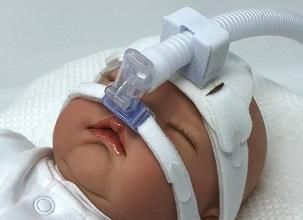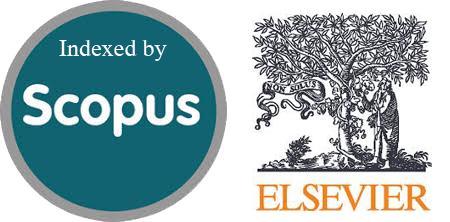Factors Influencing Continuous Positive Airway Pressure Outcome in Neonates with Respiratory Distress in Resource-Constrained Settings: Experience from Mosul, Iraq
DOI:
https://doi.org/10.54133/ajms.v9i2.2488Keywords:
CPAP outcome, LMICs, Neonatal respiratory distress, Neonatal mortalityAbstract
Background: Neonatal respiratory distress (RD) remains a leading cause of morbidity and mortality, particularly in low- and middle-income countries (LMICs) with limited resources. Continuous Positive Airway Pressure (CPAP) is a cornerstone of management, but its efficacy and factors influencing outcomes in such settings require further investigation. Objective: To identify predictors of CPAP success or failure and subsequent survival in neonates with RD in a neonatal critical care institution in a post-conflict area like Mosul (a healthcare-constrained system). Methods: This prospective observational study included 119 neonates initiated on CPAP. Data on demographics, clinical characteristics, CPAP outcomes (success/failure), and final patient outcomes (discharge/death) were collected. Univariate and multivariate logistic regression analyses were performed to identify independent predictors. Results: Overall, 79(66.4%) neonates achieved CPAP success, while 40(33.6%) experienced failure. Birth weight ≤1500 g and a 5-minute APGAR score <7 were independent predictors of CPAP failure. Mortality occurred in 29.4% of cases, with 87.5% of deaths occurring among those who failed CPAP (p<0.001). In multivariate analysis, low birth weight remained the sole independent predictor of death. Kaplan-Meier survival analysis showed significantly reduced survival in neonates weighing 1500 g or less. Conclusions: Low birth weight and low APGAR are strong predictors of CPAP failure, increasing the risk of death. In resource-constrained settings, improving antenatal care, ensuring the availability of surfactants, and expanding access to mechanical ventilation may help improve outcomes for high-risk neonates requiring CPAP.
Downloads
References
Kliegman RM, St. Geme J, editors. Nelson Textbook of Pediatrics. 21st ed. Philadelphia: Elsevier; 2019. 4264 p.
Bulimba M, Cosmas J, Abdallah Y, Massawe A, Manji K. Early outcomes of preterm neonates with respiratory distress syndrome admitted at Muhimbili National Hospital: A prospective study. BMC Pediatr. 2022;22(1):720. doi: 10.1186/s12887-022-03731-2. DOI: https://doi.org/10.1186/s12887-022-03731-2
Abdallah Y, Mkony M, Noorani M, Moshiro R, Bakari M, Manji K, et al. CPAP failure in the management of preterm neonates with respiratory distress syndrome where surfactant is scarce: A prospective observational study. BMC Pediatr. 2023;23(1):428. doi: 10.1186/s12887-023-04038-6. DOI: https://doi.org/10.1186/s12887-023-04038-6
Moresco L, Romantsik O, Calevo MG, Bruschettini M. Non-invasive respiratory support for the management of transient tachypnea of the newborn. Cochrane Database Syst Rev. 2020;4:CD013231. doi: 10.1002/14651858.CD013231. DOI: https://doi.org/10.1002/14651858.CD013231.pub2
Gizzi C, Klifa R, Pattumelli MG, Massenzi L, Taveira M, Shankar-Aguilera S, et al. Continuous positive airway pressure and the burden of care for transient tachypnea of the neonate: A retrospective cohort study. Am J Perinatol. 2015;32(10):939–43. doi: 10.1055/s-0034-1543988. DOI: https://doi.org/10.1055/s-0034-1543988
Perin J, Mulick A, Yeung D, Villavicencio F, Lopez G, Strong KL, et al. Global, regional, and national causes of under-5 mortality in 2000–19: An updated systematic analysis. Lancet Child Adolesc Health. 2022;6(2):106–15. doi: 10.1016/S2352-4642(21)00311-4. DOI: https://doi.org/10.1016/S2352-4642(21)00311-4
Dewez JE, van den Broek N. Continuous positive airway pressure to treat respiratory distress in newborns in low- and middle-income countries. Trop Doct. 2017;47(1):19–22. doi: 10.1177/0049475516630210. DOI: https://doi.org/10.1177/0049475516630210
Cummings JJ, Polin RA. Noninvasive respiratory support. Pediatrics. 2016;137(1). doi: 10.1542/peds.2015-3758. DOI: https://doi.org/10.1542/peds.2015-3758
Sweet DG, Carnielli V, Greisen G, Hallman M, Ozek E, Te Pas A, et al. European Consensus Guidelines on the Management of Respiratory Distress Syndrome: 2019 Update. Neonatology. 2019;115(4):432–50. doi: 10.1159/000499361. DOI: https://doi.org/10.1159/000499361
Qin F, Dong C, Qiu J, Song Q, Konomanyi K, Sesay LSF, et al. Modified bubble CPAP therapy in a rural Sierra Leone SCBU: A pilot study. Front Pediatr. 2025;13:1534550. doi: 10.3389/fped.2025.1534550. DOI: https://doi.org/10.3389/fped.2025.1534550
Kakkilaya V, Wagner S, Mangona KLM, Brown LS, Jubran I, He H, et al. Early predictors of continuous positive airway pressure failure in preterm neonates. J Perinatol. 2019;39(8):1081–8. doi: 10.1038/s41372-019-0392-z. DOI: https://doi.org/10.1038/s41372-019-0392-z
Sivanandan S, Murugesan A, Rameshbabu M, Sankar MJ. Factors affecting implementation of CPAP in low- and middle-income countries: A qualitative evidence synthesis. medRxiv. 2025 Apr 13. doi: 10.1101/2025.04.13.25325736. DOI: https://doi.org/10.1101/2025.04.13.25325736
Ballard JL, Khoury JC, Wedig K, Wang L, Eilers-Walsman BL, Lipp R. New Ballard Score, expanded to include extremely premature infants. J Pediatr. 1991;119(3):417–423. doi: 10.1016/s0022-3476(05)82056-6. DOI: https://doi.org/10.1016/S0022-3476(05)82056-6
Silverman WA, Andersen DH. A controlled clinical trial of effects of water mist on obstructive respiratory signs, death rate and necropsy findings among premature infants. Pediatrics. 1956;17(1):1–10. PMID: 13353856.
Thukral A, Sankar MJ, Chandrasekaran A, Agarwal R, Paul VK. Efficacy and safety of CPAP in low- and middle-income countries. J Perinatol. 2016;36(S1):S21–8. doi: 10.1038/jp.2016.29. DOI: https://doi.org/10.1038/jp.2016.29
Tourneux P, Debillon T, Flamant C, Jarreau PH, Serraz B, Guellec I. Early factors associated with CPAP failure in moderate and late preterm infants. Eur J Pediatr. 2023;182(12):5399–407. doi: 10.1007/s00431-023-05090-1. DOI: https://doi.org/10.1007/s00431-023-05090-1
Solgi MS, Hesami R, Sabzehei MK, Basiri B, Solgi MS, Jiryaee N. Predictors of nasal CPAP failure in preterm infants with respiratory distress syndrome. Acta Med Iran. 2024;62(1):e16884. doi: 10.18502/acta.v62i1.16884. DOI: https://doi.org/10.18502/acta.v62i1.16884
Kamugisha E, Konje E, Hokororo A. Factors associated with mortality among premature babies in Mwanza, Tanzania. East Afr J Public Health. 2014;14(4):755–60. doi: 10.4314/eajph.v11i4.
Gromann J, Mancino I, Manegold-Brauer G, Adams M, Wellmann S, Burkhardt T. Incidence of neonatal respiratory morbidity after vaginal and cesarean delivery in late-preterm and term infants. Swiss Med Wkly. 2024;154:w3798. doi: 10.57187/smw.2024.3798. DOI: https://doi.org/10.57187/s.3798
Gulczyńska E, Szczapa T, Hożejowski R, Borszewska-Kornacka MK, Rutkowska M. Fraction of inspired oxygen as a predictor of CPAP failure in preterm infants with respiratory distress syndrome: A prospective multicenter study. Neonatology. 2019;116(2):171–817. doi: 10.1159/000499674. DOI: https://doi.org/10.1159/000499674
Permatahati WI, Setyati A, Haksari EL. Predictor factors of continuous positive airway pressure failure in preterm infants with respiratory distress. Glob Pediatr Health. 2021;8. doi: 10.1177/2333794X211007464. DOI: https://doi.org/10.1177/2333794X211007464
Bopape-Chinyanga TC, Thomas R, Velaphi S. Outcome of very-low-birth-weight babies managed with nasal continuous positive airway pressure, with or without surfactant, in a high-care nursery. South Afr J Child Health. 2016;10(4):199–203. doi: 10.7196/SAJCH.2016.v10i4.1096. DOI: https://doi.org/10.7196/SAJCH.2016.v10i4.1096
Hubbard RM, Choudhury KM, Lim G. Treatment patterns and clinical outcomes in neonates diagnosed with respiratory distress syndrome in a low-income country: A report from Bangladesh. Anesth Analg. 2018;126(5):1684–1686. doi: 10.1213/ANE.0000000000002865. DOI: https://doi.org/10.1213/ANE.0000000000002865
Boix H, Fernández C, Serrano Martín M del M, Arruza L, Concheiro A, Gimeno A, et al. Failure of early non-invasive ventilation in preterm infants with respiratory distress syndrome in current care practice in Spanish level-III neonatal intensive care units – a prospective observational study. Front Pediatr. 2023;11. doi: 10.3389/fped.2023.1098971. DOI: https://doi.org/10.3389/fped.2023.1098971
Mu Y, Li M, Zhu J, Wang Y, Xing A, Liu Z, et al. Apgar score and neonatal mortality in China: an observational study from a national surveillance system. BMC Pregnancy Childbirth. 2021;21(1). doi: 10.1186/s12884-020-03533-3. DOI: https://doi.org/10.1186/s12884-020-03533-3

Downloads
Published
How to Cite
Issue
Section
License
Copyright (c) 2025 Al-Rafidain Journal of Medical Sciences ( ISSN 2789-3219 )

This work is licensed under a Creative Commons Attribution-NonCommercial-ShareAlike 4.0 International License.
Published by Al-Rafidain University College. This is an open access journal issued under the CC BY-NC-SA 4.0 license (https://creativecommons.org/licenses/by-nc-sa/4.0/).











